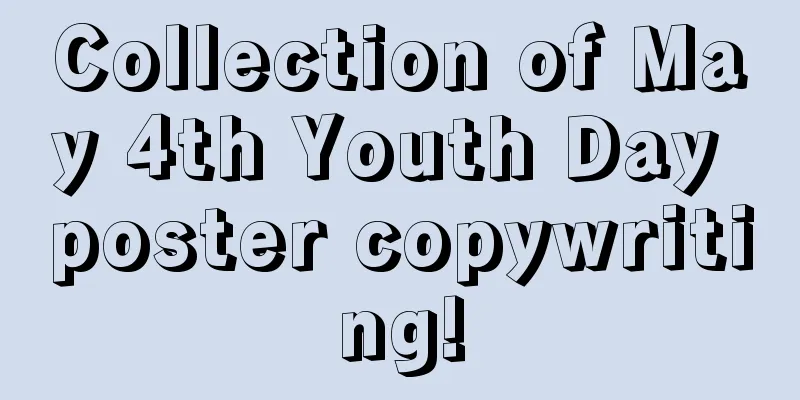Google can't kill Android, but it can put it into hibernation

|
Editor's note: Does Google's renaming of its smartwatch software from "Android Wear" to "Wear OS by Google" indicate that Google is slowly killing the Android brand? An article published on FactCompany points out that there are reasons for Google to make these adjustments. As for the Android brand, Google has always been entangled in its attitude towards it. But from the historical development process, the Android brand will not die, it is just hibernating. When Google renamed its smartwatch software from "Android Wear" to "Wear OS by Google" earlier this month, some observers spotted a trend. “Google is slowly killing the Android brand,” reads the headline of an article from Gizmodo Australia, which also points out that Google rebranded its Android Pay service to Google Pay a month ago, and that Google’s Pixel 2 only mentions Android at the bottom of its webpage. The Verge made similar comments about the Android Wear name change, calling it “an ongoing trend” where Google is minimizing the use of the Android brand across its products. These analyses are not wrong, but they are nothing new. Over the past decade, Google has been hesitant about whether to make Android a popular consumer brand or something that only professional technicians care about. Therefore, although there have been many media or commentators who have declared that the Android brand has been abandoned by Google, it always seems to return to people's attention quickly. Early life Google's ambivalent relationship with the Android brand began with the release of the first Android phone, officially called the T-Mobile G1 with Google. Although the official press release declared the G1 "the first phone powered by Android," and some tech media reported it as such, the extensive publicity campaign for the phone focused on the phone's physical keyboard and Google services. The TV ads did not mention Android at all. Android's widespread awareness came about in a circuitous process. While AT&T still had an exclusive contract to sell the iPhone, Verizon began using the "Droid" brand on a range of phones from Motorola, HTC, and Samsung, positioning the original Motorola Droid as the best choice for Apple haters. Introductory advertising focused entirely on features the iPhone lacked, such as a removable battery and multitasking. The phones were popular, helping to spark the competition between Android and the iPhone that still exists today. But in some ways, the Droid brand was a little too successful. Outside of tech circles, people tend to conflate Verizon's handful of Droid phones with the Android platform as a whole. While Google didn’t explicitly resist the success of the Droid, it did take steps to build up the Android brand. In 2011, Google began allowing carriers and phone makers to copy and modify Android’s green robot character for advertising purposes, and Australian carrier Telstra opened an “Androidland” store in Melbourne adorned with a bright green robot logo. That same year, Google made the Android robot a fixture of its booth at the massive Mobile World Congress trade show, and when Google and Samsung unveiled the Galaxy Nexus phone, they billed it as “the first phone to ship with Android 4.0.” In this context, Google didn’t push Android into the background, but proudly showed off its operating system.
Taming tablet and phone manufacturers However, it wasn't long before Google began to downplay the Android brand. In 2012, Google renamed its app store from Android Market to Google Play Store, while applying the same brand to its music, video, and e-book stores. For Google, it’s a way to counter Amazon, whose Kindle Fire tablet runs a forked version of Android (without Google’s permission) and is “taking over” the Android tablet market. (“We’re going to do a much better job of making people understand the ecosystem they’re buying into,” Andy Rubin, then-head of Google’s Android division, told The Verge in 2012.) Around the same time, phone makers seemed to be distancing themselves from the Android name. They didn’t seem to enjoy reminding people that their devices all ran the same software provided by someone else. HTC, for example, never mentioned Android when it announced its flagship HTC One in early 2013, and Samsung’s advertising and marketing for its Galaxy phones focused entirely on Samsung-exclusive software features. Meanwhile, Google scaled back its presence at Mobile World Congress, with sources telling TechCrunch that it wanted to place less emphasis on the Android brand. But a year later, Google seemed to realize that Android had drifted too far toward obscurity. At the time, Google was trying to push its own vision for Android with a visual overhaul called Material Design and the Nexus 6 phone. Google also launched Android One, a pure version similar to the Nexus line, for emerging markets like India. As of early 2014, Google made it mandatory for phone manufacturers to display a "Powered by Android" message when they turned on their phones. That fall, Google launched its first major ad campaign for Android with a slogan: "Be together. Not the same." It hinted at Android's customization capabilities and vast hardware options. Google continued to use the slogan in TV ads over the next two years. It was the strongest statement yet that Android was a consumer-facing brand. In 2015, Google also transformed its mobile payment service, Google Wallet, into a new and improved version called Android Pay.
WEAR OS and the future This brings us to Google's recent brand separation from Android. Why Wear OS and Google Pay? The reason is simple: these two services are not just for Android users. Wear OS is based on Android, but it can also be paired with iPhones. Google Pay provides tap-to-pay functionality on Android phones, but users can also use Google Pay to shop online or transfer money to other users from any other device. But why didn't Google mention Android in its pitch for the Pixel 2 and Pixel 2 XL phones? Perhaps Google, like other phone makers, eventually concluded that Android, no matter how pure the Pixel's version, isn't a sellable feature. Better to focus on novel features like unlimited photo storage and easy access to the Google Assistant.
Besides, Google has no pressing need to promote Android anymore. The smartphone OS wars are over: Last year, Android accounted for 86% of smartphone shipments worldwide, according to Gartner, and there are no more threats on the horizon. The iPhone's market share has stagnated, Microsoft has stopped developing Windows Phone, BlackBerry has become the only phone maker using Android, Amazon's smartphone plans have failed, and other Android phone makers have mostly been unable to break free of Google's ecosystem. Still, Android phone makers are reluctant to let Android be Android. Samsung, for example, gives its Bixby voice assistant a handy dedicated button on the newly released Galaxy S9 and doesn’t let users link it to Google Assistant, while Microsoft sells an S9 with its own software and services pre-installed. So don't be surprised if Google starts marketing Android again, especially as it launches Android One and Android Go phones that put Google's services front and center. If history is any guide, the Android brand isn't dying. It's just hibernating. |
>>: Advice from an old programmer: Don’t rely on technology for your whole life
Recommend
Strategic Emergence - Are You Focused or Diversified?
Strategic Emergence - Are You Focused or Diversif...
Is it true that dogs can see all the colors in Bluey?
I heard that dogs all over the world are obsessed...
How powerful is iPhone 7? Its performance surpasses MacBook Air
Not long ago, several benchmark databases showed ...
China Automobile Dealers Association: China's auto dealer inventory warning index was 60.7% in December 2020
On December 31, 2020, the latest issue of the &qu...
Yulin Mini Program Development Company, how much does it cost to develop a supplement mini program?
How much is the quotation for Yulin supplement de...
Samsung launches 31.5-inch 4K UHD monitor to enter the computer field
[September 9th news] At this year's IFA Berlin...
There are so many mosquito repellent products, which ones are the safe and effective mosquito repellent ingredients?
The weather is getting hotter, and there are more...
Weakness and self-destruction: Why didn't Microsoft release a new Surface Pro?
Recently, Microsoft, which has attracted much att...
Practical case analysis: A personal account can gain 1,000 followers per day with just one trick
"Before the arrival of 5G, what you want is ...
What can be done when evolution meets algorithms?
Everyone knows about the evolution of plants and ...
The peak season for flying catkins has arrived! Quickly collect the protection guide for children
April is the time when spring flowers bloom and w...
Shared car company Tusong completes B+ round of financing, 1,500 yuan deposit can be refunded within 30 days
Nowadays, there are too many shared car brands. A...
Where to buy Qunar? How to use vouchers to attract new users and promote their activation?
There is less than a month left until Chinese Val...
Durex brand communication analysis!
The quality of Durex products themselves is not t...







![Red Hat Certification RHCSA video tutorial Linux redhat 7.0 full set [theoretical video + experimental video + experimental document]](/upload/images/67cc02571ea8d.webp)

